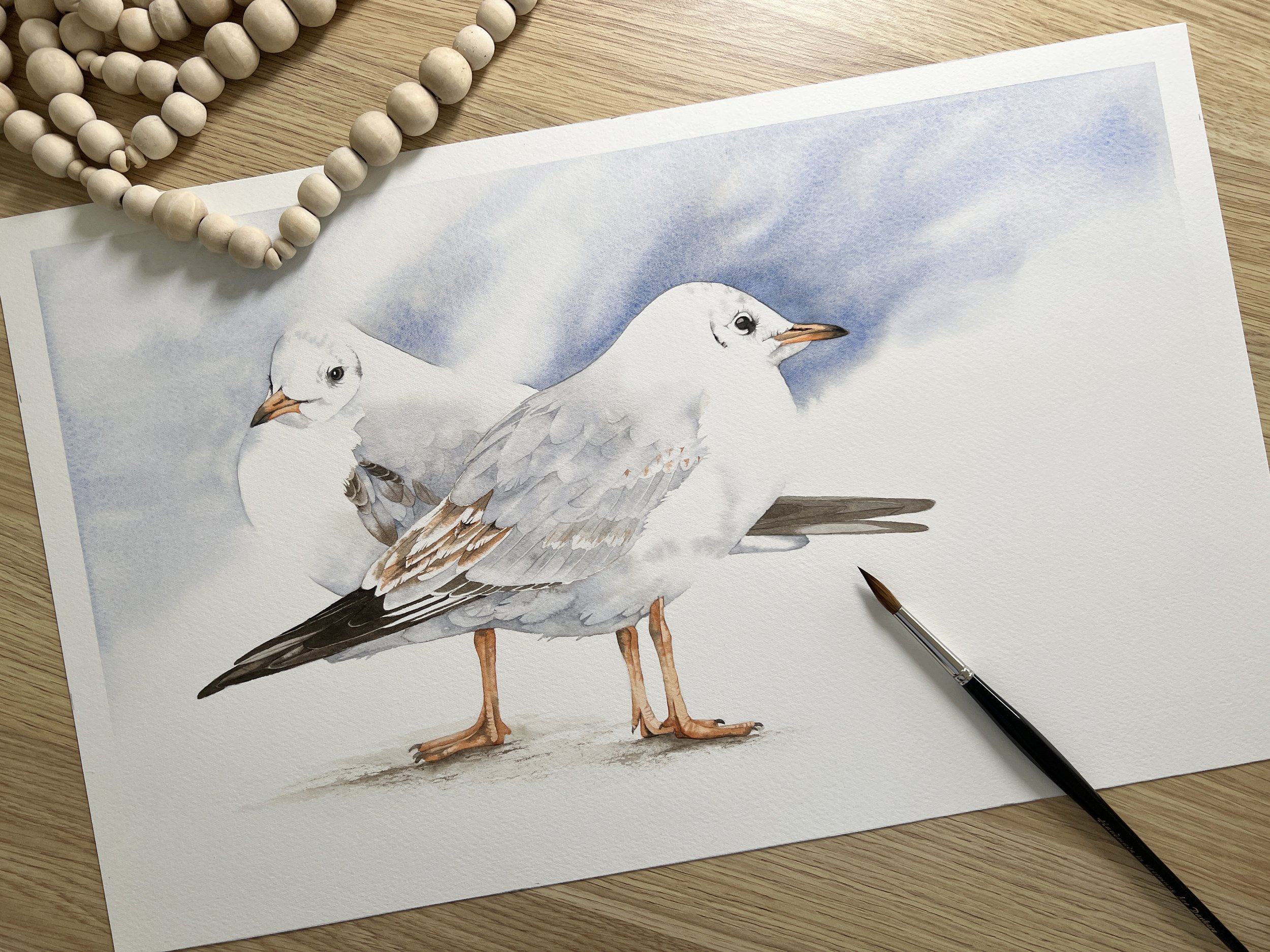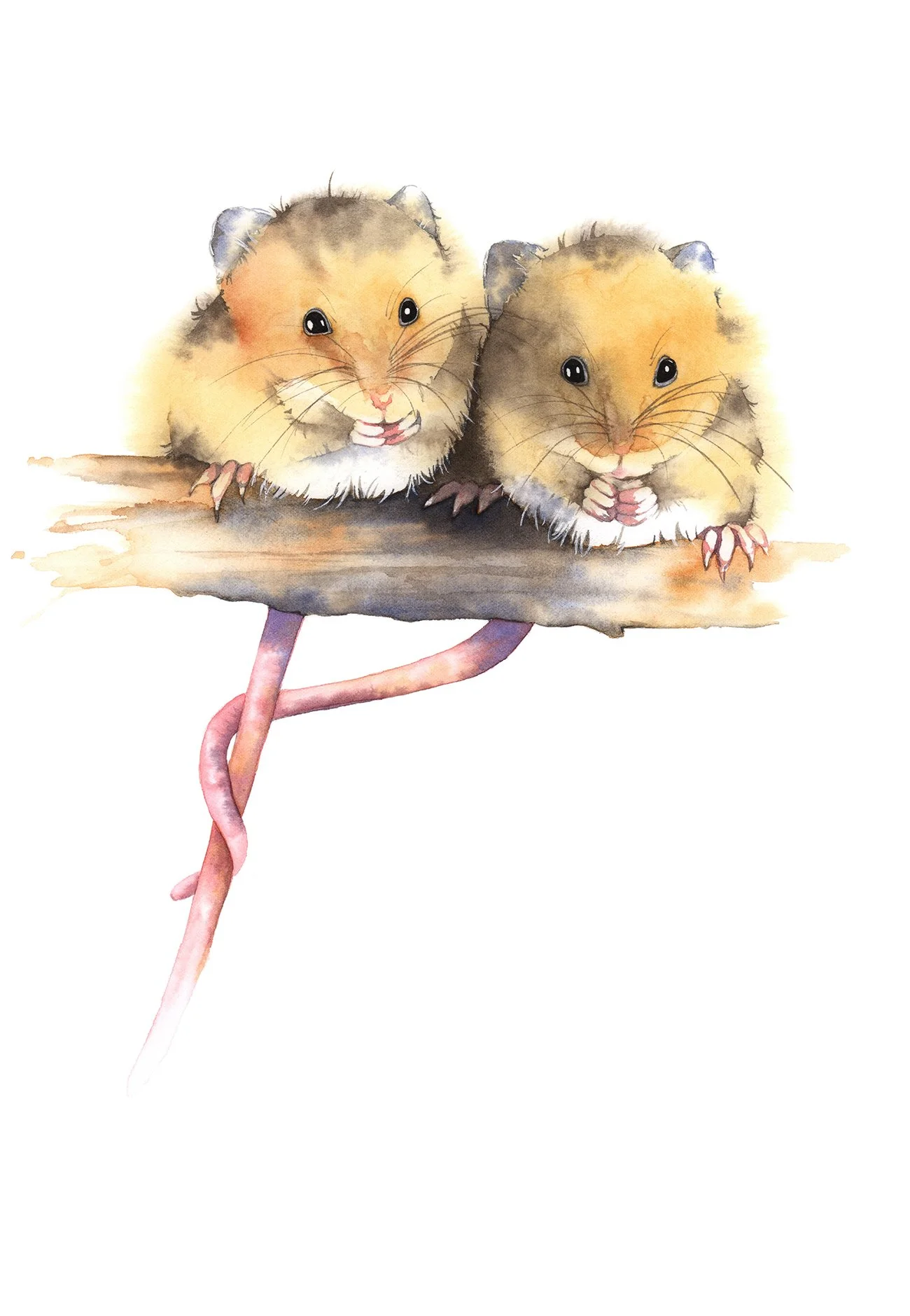How to Paint Lost and Found Edges in Watercolour
An example of a seagull painting showing various hard and soft edges and sharp edges.
Every mark you make with your brush creates some sort of edge. Some edges are sharp and well defined (found edges) while others are soft and hazy (lost edges).
With watercolour painting the delicate balance between lost and found edges holds the key to creating depth, atmosphere, and emotion in your artwork.
Understanding how to master the art of lost and found edges is an important skill you should learn. An inexperienced painter may not give the edges in a painting much thought while an experienced artist knows that a successful painting requires a variety of edges.
When you begin to pay attention to edges you start to add visual excitement to your paintings.
Let's have a look at how you can breathe life and vitality into your paintings through the art of lost and found edges.
What are lost and found edges?
There are a number of different types of edges that you can use in your watercolour paintings and sometimes they are referred to as 'lost and found' edges.
hard (found)
soft (lost)
lost (lost)
broken (found)
Hard edges are referred to as found edges because they are easy to see. Soft edges are referred to as lost edges because it's harder for the eye to determine where the edge is.
Different techniques were used to create a variety of edges in this seagull painting.
Hard edges
Hard edges have sharp edges that are well defined and they separate two distinct areas in a painting. They are painted on dry paper and they provide clarity and structure to the composition. They are useful in creating focal points or emphasising important details.
Hard edges occur when you paint on dry paper.
Soft Edges
A soft edge shows a gradual transition between two colors or shapes, without any distinct separation. They are achieved by using a wet on wet technique or by gently softening the edges with the brush while the paint is still wet.
Painting on wet paper creates the soft edges of this shape because the paint bleeds across the wet surface.
Lost edges
I refer to a lost edge as an edge that is absent. A lost edge is painted by allowing the adjacent colours or values to blend or bleed into one another. In the Leucadendron painting below I have obscured the edges of some of the bracts and leaves by making the background colour the same colour as the subject.
The Leucadendron painting in which I have obscured the edges of some of the bracts and leaves by making the background colour the same colour as the subject.
If the area you are painting has no colour and you have included no colour on the background you can leave an edge unpainted, as I have done in the woodpecker painting below.
Watercolour painting of a woodpecker perched on a tree branch.
Broken Edges
Broken edges have a combination of both hard and soft edges. They are created by using a dry brush technique. When you use the dry brush technique the marks you make on the paper have a fragmented appearance.
The painting edges here are broken. This mark was painted on dry paper with the side of the brush.
I've included different edges in this Guinea Fowl painting.
How do you paint the different paint edges in watercolor?
Hard edges
Hard edges are painted on dry paper using the wet on dry technique. Your paint brush should be fully loaded with fluid paint when you want to paint a hard edge. Because you are working on dry paper the paint dries with a hard, defined edge.
Soft edges
There are two methods for achieving soft edges in watercolour painting. The first technique involves applying paint on wet paper using the wet-on-wet method. In this approach, the paint spreads over the wet paper, naturally forming a soft edge where it comes to a halt. When you pant a soft edge the paper can be quite wet with a shiny appearance or you can paint them on paper that is damp, after the sheen has dulled somewhat.
To effectively utilise this method, it's essential to moisten an area larger than the intended painted section. This is crucial because if the paint bleeds right up to the water's edge, it may result in an unintended hard edge.
The second technique involves working wet on dry and then manually softening the edges of the paint with your brush, before the paint dries. I have a video where I demonstrate this technique.
Lost edges
Lost edges, where there is no edge, can be painted by allowing adjacent colors or values to blend or bleed into each other.
A watercolour painting of two apricot-coloured roses showing "lost edges”.
They can also be included by not painting them in at all as I have done on the Seagull and Woodpecker paintings above.
Broken edges
Broken edges are painted on dry paper with a brush that is damp. They are usually painted with a small amount of paint in the brush. You can use a flat brush or a round brush. When I use a round brush I use the side of the brush to apply the paint.
Use the side of a round brush to paint quickly across the surface of the paper to create broken edges.
What do you use the different edges for?
Hard edges
Harder edges are often used near the main focal point of the painting where you want to draw the viewer's eye. Sharp, well-defined edges can make certain elements stand out, directing the viewer's gaze to the most critical areas of the painting.
Hard edges are useful when you want to clearly define the shapes and forms of objects. This is especially beneficial when painting detailed subjects or when you want to convey a sense of solidity and structure.
Incorporating hard edges alongside soft edges enhances contrast in your painting. This contrast can add visual interest, making the painting more dynamic and engaging.
Soft edges
Soft edges are commonly used for atmospheric effects, or to depict objects with softer contours, such as clouds, foliage, or flowing fabric. Soft edges create a sense of softness, fluidity, and suggestiveness, and they are particularly useful for conveying a sense of depth or creating a dreamy, ethereal quality in a painting. Soft edges recede so you can place soft edges where you intend to visually push elements into the background.
Lost edges
Lost edges are particularly useful for creating a sense of ambiguity and allowing the viewer's imagination to fill in the details. They also help to give the subject more form or structure.
In dynamic scenes, like flowing water or animals running, lost edges can suggest movement. By allowing edges to blend and flow, you can capture the fluidity and energy of the subject.
Broken edges
Broken edges are effective in suggesting texture, adding visual interest, and capturing the energy and movement of a subject. They are often used to depict rough surfaces, foliage, or intricate details where a hard edge might appear too rigid or unnatural. Broken edges add a sense of spontaneity, liveliness, and informality to a painting.
Artists sometimes use broken edges when they are painting water. The brush skips across the paper leaving areas of white paper showing which suggests the light shimmering on the water. Broken edges also add a sense of sense of spontaneity and fluidity, preventing your painting from looking too controlled or rigid.
A sparrow painted in watercolour showing hard, soft and lost edges.
A successful painting will have a combination of lost and found edges. Think of painting like creating music, where the different edges in your painting are the notes on a sheet. Just as a musician uses a mix of long and short notes to make beautiful music, you, as an artist, can use various edges—hard, soft, lost, and broken—to tell a story on your paper. So, when you're painting, don't forget to play around with these edges; they're your tools to make your art come alive and speak to those who see it.
If you are interested in learning to paint in watercolour, I have over 170 online, voiced over watercolour tutorials for all skill levels.
Original art and prints are available to purchase in the shop.
Further reading: 9 Watercolour Texture Techniques
















